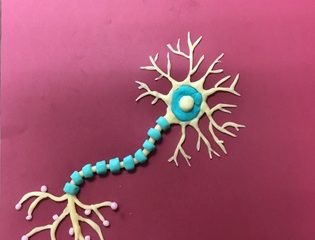Here is what I am reading today:
“Scientists have traditionally sought the evolutionary origins of human speech in primate vocalizations, such as monkey coos or chimpanzee hoots. But unlike these primate calls, human speech is produced using rapid, controlled movements of the tongue, lips and jaw. Speech is also learned, while primate vocalizations are mostly innately structured. New research published in Current Biology by W. Tecumseh Fitch, Head of the Department of Cognitive Biology at the University of Vienna, supports the idea that human speech evolved less from vocalizations than from communicative facial gestures.”
“In 2005, psychological scientist and competitive athlete Jessi Witt of Purdue University played on the U.S. National Ultimate Frisbee team, which won the gold medal at the World Games. Her interest in sports extended to her professional work and in this study, she and her co-authors explored visual perception and sports performance.”
“Psychiatrist and author, Allen J. Frances, believes that mental illnesses are being over-diagnosed. In his lecture, Diagnostic Inflation: Does Everyone Have a Mental Illness?, Dr. Frances outlines why he thinks the DSM-V will lead to millions of people being mislabeled with mental disorders.”
““This is really striking because in studying changes in heart rate variability, we are looking at a measurement that tells us a lot about the way the autonomic nervous system affects the heart,” says Luigi Fontana, MD, PhD, the study’s senior author. “And that system is involved not only in heart function, but in digestion, breathing rate and many other involuntary actions. We would hypothesize that better heart rate variability may be a sign that all these other functions are working better, too.””
“Mothers who use marijuana as teens — long before having children — may put their future children at a higher risk of drug abuse, new research suggests.”
“Maternal blood sampled at about 18 weeks into the pregnancy and a paternal saliva specimen contained enough information for the scientists to map the fetus’ DNA. This method was later repeated for another expectant couple closer to the start of their pregnancy. The researchers checked the accuracy of their genetic predictions using umbilical cord blood collected at birth.”



